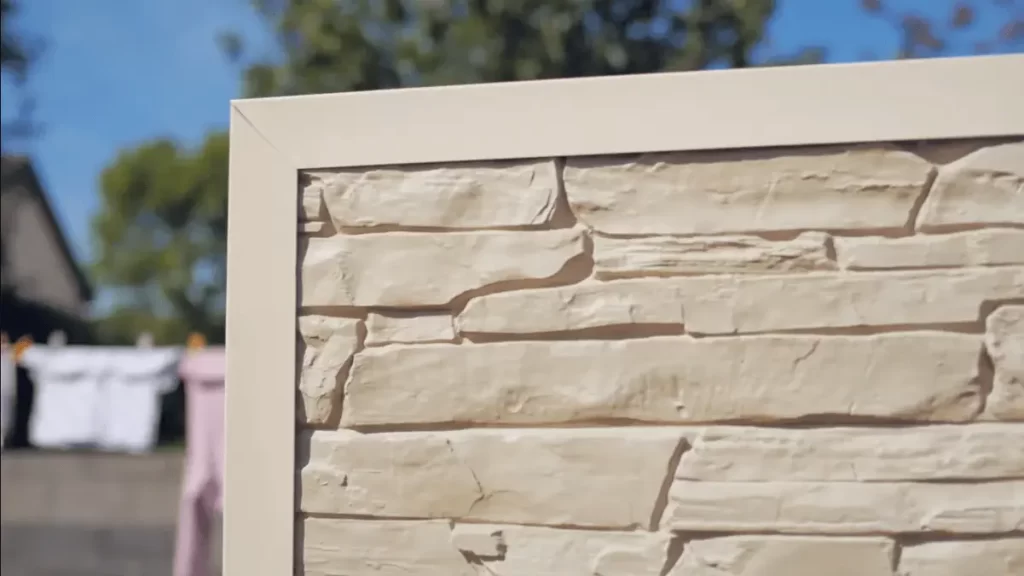What is Cladding in the Construction Work


What is Cladding in the Construction Work
Classing is a term frequently used in construction; you may have even heard someone saying it or when reading an article. The word cladding means the structure’s protective layer, safeguarding the work from harsh weather and accidents. But that is the general definition of cladding. To apply cladding on the building constructed, builders, contractors, and architects should know everything about this work. In this guide, we explore many areas of cladding. Please continue reading to find what cladding is, its importance, types, and installation methods in a detailed form.
What is Cladding?
After a building is completed, the exterior needs to be enhanced and attractive. Most see the brickwork, stone, and glass- as the reason for the eye-catching sight. What you do not know is that it is cladding that makes the structure’s building look sharp.
To make it simpler to understand, cladding is the outer layer applied on the exterior of a building. The purpose is to protect the structure from poor weather, reduce outside noise pollution, and enhance the formation of the layout. In short, cladding is a factor that helps in making post-construction buildings visually appealing, weather-resistant, and safe from loud sounds.
Read More: What is the Purpose of a Construction Site Fence
What is Cladding Made Of?
Various types of materials are used to create cladding.
- Wood
- Vinyl
- Metal
- Brick
- Stone
- Fibre Cement
- Glass
- Ceramic Tiles
- Panels
Explaining the Types
1) Wood
Wood cladding is used on residential projects. The natural and comfortable texture adds a warm visual. With proper maintenance, wood cladding will last for many years.
2) Vinyl Cladding
Vinyl cladding is an affordable type of cladding, making it an option for start-ups or small companies. There are diverse alternatives in the color and consistency of the aforesaid cladding and it can skillfully be laid to the building’s exterior.
3) Metal Cladding
If you want to give the building a more modern look, metal cladding is the best choice. Available in metal, zinc, and aluminum, it is highly long-lasting and sturdy and gives a sleek visual to the construction structure. Furthermore, it is hard for metals to catch fire, making metal cladding the perfect protective mask.
4) Brick Cladding
Brick is a heavy object, which ensures that the exterior remains safe from dangerous elements. Furthermore, a brick exterior provides a classic look, making the final result picture-perfect.
5) Stone Cladding
Similarly to brick cladding, cladding with stone materials allows easy insulation and acts as an excellent barrier for the exterior, ensuring it remains in its authentic shape. The stones used are slate, marble, or sandstone.
6) Fibre Cement Cladding:
Layering the exterior with fibre cement cladding is an assurance that the exterior of the residential or commercial structure built is safe from fire, water, and rotting. The exterior will remain in good health and strength.
7) Glass Cladding
Cladding made with glass materials is always a fun option to try to give the commercial space an elegant appeal. Glass is a weak material; however, glass cladding provides thermal insulation and weather protection to the exterior.
8) Ceramic Tile Cladding
This cladding type has easy maintenance as it is easy to clean and does not suffer from moisture or insect. Moreover, they are durable and can resist harsh climates.
9) Panel Cladding
Used in various construction types, panel cladding offers the exterior strict protection from factors with the potential to cause harm.
The Benefits of Cladding
Cladding has a set of benefits that make it a crucial step to fulfill once the construction is completed. After the construction is made, the exterior is open to many problems that make it weak or lose its aesthetic. Cladding is the barrier that saves the longevity, visual, and sturdiness of the surface by acting as a barrier to all these situations.
When choosing cladding, you are to come across multiple colors, textures, and styles, not only protecting the building cover but also making it more visually appealing. Cladding your exterior maintains the temperature inside in summers and winters as the layers of materials installed provide thermal insulation.
When a structure is built, there comes a time when it is ready to sell. With the protection, comfort, and visual benefits of cladding, there is a hundred percent chance for the property value to increase.
The materials are made with eco-friendly and recycled resources, protecting two factors at once: the exterior and the environemnt.
Installing Cladding on Your Structure
There are two ways of covering the building’s outside with cladding: dry cladding and wet cladding. The two installation systems require the job of trained and specialist workers. The judgment to use wet cladding or dry cladding is a choice, depending on the constructors, architects, and builders.
- The drywall cladding way involves the use of machinal tools. The cladding panels are attached with the help of the tool, making it a less complicated method of installation.
- In the wet cladding method, the procedure is done using moist adhesive to install the tile, brick, or stone facings into the exterior walls.
Are there Disadvantages of Cladding?
There are some drawbacks of cladding, but not deep enough to change the constructor’s mind. The first disadvantage is the price of cladding. Cladding covers the exterior surface, which means a high quantity of material is required together with a skilled labor force, which can be expensive. Additionally, the labor should be experienced in installing cladding panels to ensure they are properly installed to prevent the cover moisture, which can be costly to hire. Another disadvantage is that the layer needs constant supervision. However, modern inventions are made, and now there are self-cleaning surfaces in the cladding panels.
Final Words
Layering the construction’s exterior with layers of cladding is for safety and longevity. You can install cladding on newly built construction and even on reconstructed models, giving them a new and classy visual. When the construction is finished, do not think the job is done. There is another task waiting to be installed on the exterior of the structure!

